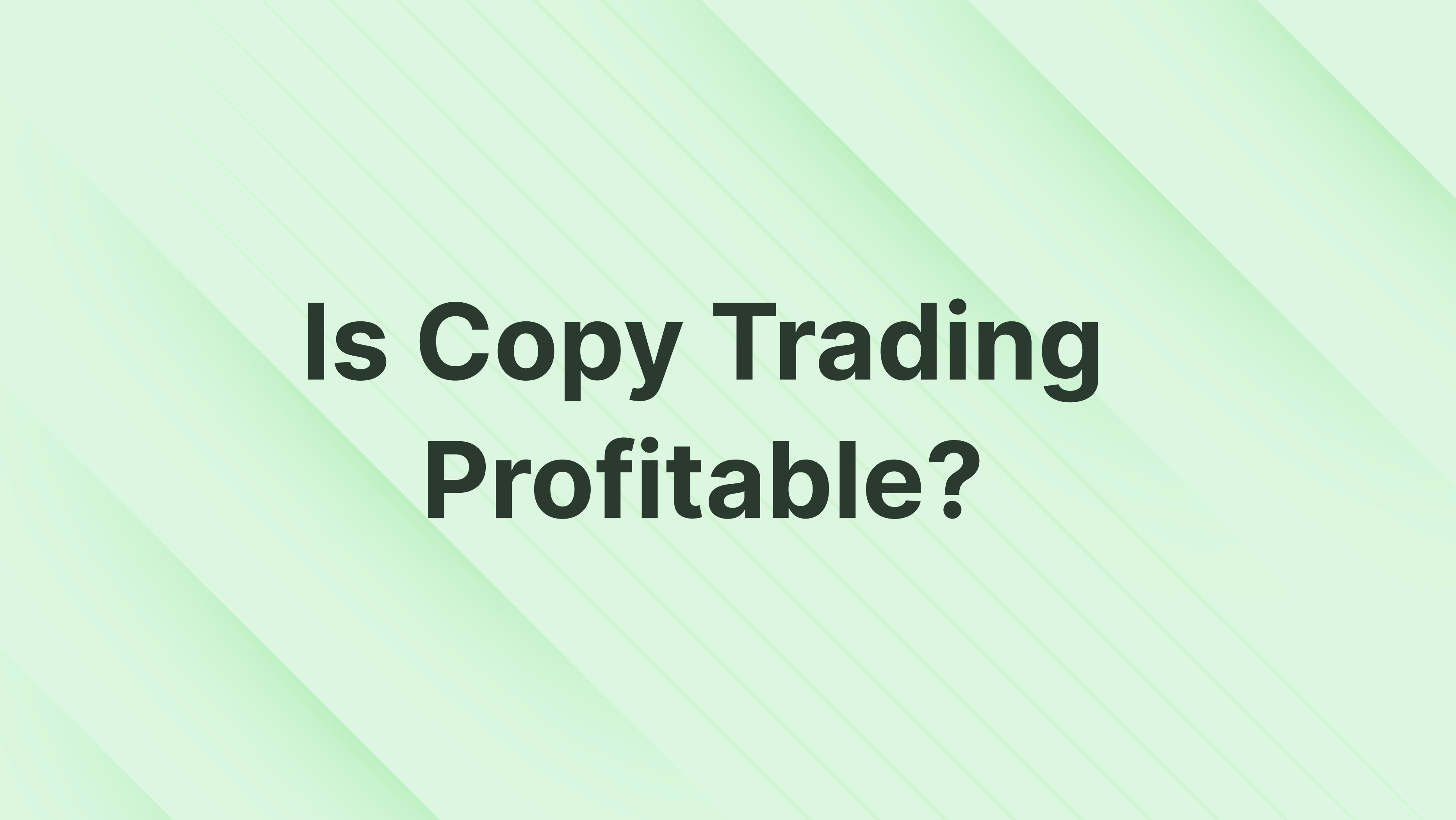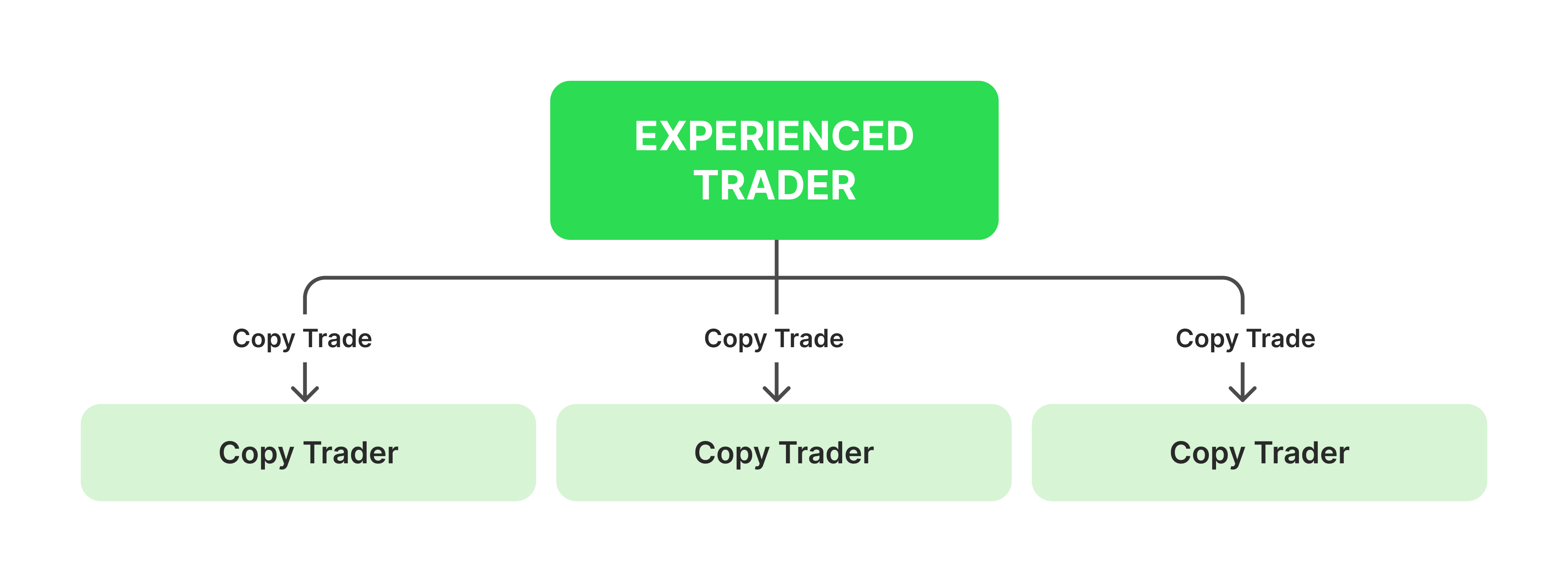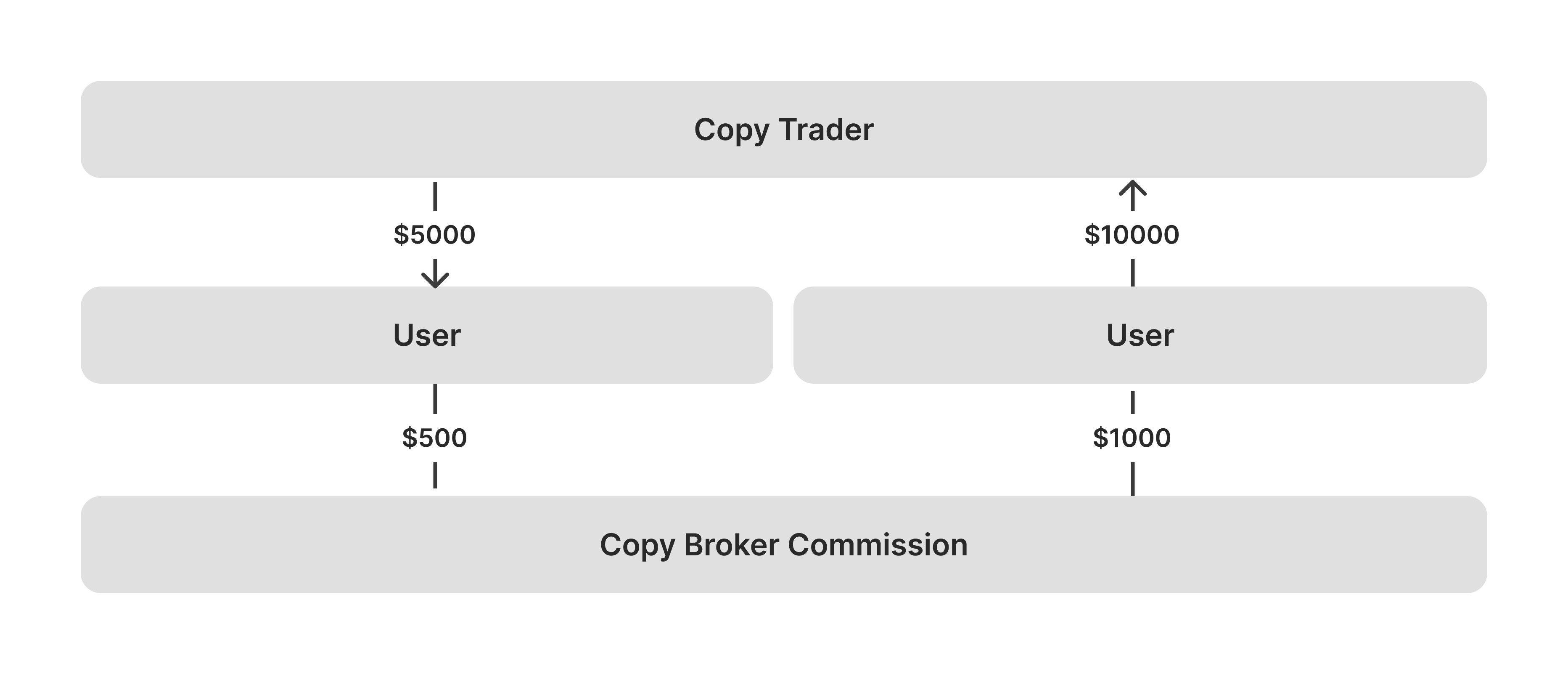Is Copy Trading Profitable in 2024?

 By Hazem Alhalabi
By Hazem AlhalabiA versatile writer in a wide range of concepts, specifically in Web3, FinTech, crypto and more contemporary topics. I am dedicated to creating engaging content for various audiences, coming from my passion to learn and share my knowledge. I strive to learn every day and aim to demystify complex concepts into understandable content that everyone can benefit from.
Long hours of reading and writing are my bread and butter, and my curiosity is the catalyst to becoming the experienced writer I am. I excel at writing in English and Arabic languages, and I am endlessly looking to explore new realms and endeavours.
 By Tamta Suladze
By Tamta SuladzeTamta is a content writer based in Georgia with five years of experience covering global financial and crypto markets for news outlets, blockchain companies, and crypto businesses. With a background in higher education and a personal interest in crypto investing, she specializes in breaking down complex concepts into easy-to-understand information for new crypto investors. Tamta's writing is both professional and relatable, ensuring her readers gain valuable insight and knowledge.

Back in the day, investors used to spend months and years of trial and error in the financial markets to find their most suitable trading strategy. However, with the advent of technology and the digitalisation of platforms, the learning curve has been shortened massively with copy trading.
Traders can now find tested and proven investing strategies and copy them seamlessly, enabling their portfolios to flow according to the copied trading system.
One might argue that investors have different risk tolerance, capital, objectives, and styles. Moreover, a successful trade that happened a week ago might not work today. So, is copy trading profitable? Shall you invest in this strategy? Let’s find out.
Copy trading is an investment strategy that involves executing market orders following a successful trader.
Beginner traders can copy and paste other investors’ strategies while learning to capitalise on current market opportunities.
Copy trading can be fully or semi-automated for traders who want to adjust their portfolios without changing the entire system.
Copy trading means copying an existing trading system registered by other investors, usually professionals and market experts. Users can search for and choose an investment strategy that suits their preferences and budget. Then, mirror it to their account, allowing them to buy and sell in the same manner as the copied portfolio to achieve similar outcomes.
Professional investors create retail investor accounts and establish a trading system that includes the invested markets, assets, budget, risk degree, and order types. They register this strategy at the broker’s platform, which offers it to other traders, usually in exchange for a share of returns.
This approach appeals to new traders who want to capitalise on low market entry barriers and find more sources of income. However, such users may not have sufficient knowledge and experience to make their profits.

Copy trading shortens the learning curve because it allows newbies to “learn by doing” and improve their skills while investing with high chances of success.
Moreover, copy trading enables beginners to capitalise and earn from current market opportunities without waiting to learn the required skills.
For example, if a new trader is told that the crypto market is surging and cryptocurrencies can make a solid income, without proper knowledge, the trader is more likely to fail and lose their invested money.
However, with the copy trading strategy, they can mimic another investor’s portfolio and increase their odds of success.
Yes, and most jurisdictions sanction copy, mirror and managed accounts according to local laws. The UK FCA categorises copy trading as a portfolio management service, which is totally legitimate.
The US regulator, the SEC, affirms the legality of copy trading as long as they are being performed by a registered broker at the Securities and Exchange Commission.
Fast Fact
Copy trading was invented in 2005 when traders developed and copied algorithms to mirror financial market investors.
In short, yes. However, the real question is, “How profitable is copy trading?” to answer this, let’s review some factors that determine the success of copy trading.
The copy trading brokerage plays a vital role in this experience. Copy trading platforms offer a history overview, background information, and investment records of the copied strategies, which massively help traders find the most suitable system.
Providing details on each copy trading strategy, expected returns, and risk management strategy allows users to avoid unexpected price action and losing money rapidly due to sudden volatility.
To determine whether “is copy trading profitable?” it is also essential to look at the short-term vs long-term projections and if a trader can take temporary losses before achieving better returns in the long run.

Copy trading is not a foolproof method to achieve eternal returns. However, relying on proven investing techniques is one way to trade with higher chances of success.
Full reliance on copied strategies is a common tactic for first-timers who lack trading knowledge and experience and want to delegate all the activities to another investor.
This way, all copy traders need to do is find a reliable investor they can trust, view their copy trading signals and assets, and automatically execute trades in the market.
This method is for those with some practical experience and market knowledge but looking to delegate the research and analysis to a pro.
Traders can select a portfolio that suits their expectations and check the order execution type, the expected copy trading profit, risk level, and invested capital. Then, copy and paste trading activities while continuously adjusting according to market conditions.

To put things into perspective, let’s explain how copy trading works.
Experienced traders register on a brokerage platform, create a trading portfolio and share it to monetise their strategy.
The brokerage platform conducts several protocols to background-check the trader and inspect the copy system.
The broker puts the investor’s strategy on their pre-built investment systems and agrees on the fee structure with the original trader.
The platform traders browse copy trading strategies and filter them based on risk level, fees, markets and required capital.
Traders choose the desired trading system and select the execution model, whether fully automated or manual.
The master and the user accounts are now linked, and the trader’s activities are mirrored onto other connected accounts.
Charges and fees are deducted from the final user’s profits to compensate the master trader and the copy trading platform.
There are various approaches to copy-and-paste trading techniques. You can choose a strategy that offers the most returns, a conservative method or a diversified portfolio. Choosing these strategies depends on your budget and objectives.

Copy trading is profitable and can be very lucrative if managed correctly. However, there are some downsides to trading automatically and relying on other portfolios. Let’s explore the ups and downs of copy trading.
Hindering decision-making: Relying on others’ analysis and research can affect the trader’s ability to make independent decisions, especially if the trader does not learn the basics.
Dependence on technology: Full reliance on technology can be risky if system glitches happen or, even worse, if the brokerage platform goes offline and traders cannot track their positions.
Different risks involved: Despite being able to select the strategy that suits the trader’s risk tolerance or even adjust it, during unpredictable movements, the copied trader may take additional risks that other traders cannot afford.
Fees: Copy trading comes with additional service fees. MT4 copy trading charges can differ between brokers and trading volume.
Liquidity gaps: Liquidity issues may arise in less-supplied markets. This happens when the master trading account executes a trade at a specific rate, and the price differs slightly for followers simply because liquidity has changed within a few seconds.
Copy trading is an excellent investment method for new investors and those who want to gain profits with limited knowledge about trading. However, it must be executed carefully.
So, to answer the question, “Is copy trading profitable?” Yes, it is, but traders must consider the variables when selecting a suitable investing strategy. Check the copied investor’s history track, proven rate of return, preferred markets and risk tolerance.
One way to capitalise on copy trading is finding one that allows you to semi-automate order execution, adjust the copied strategy on the go, and fine-tune your portfolio to make the most of this strategy.